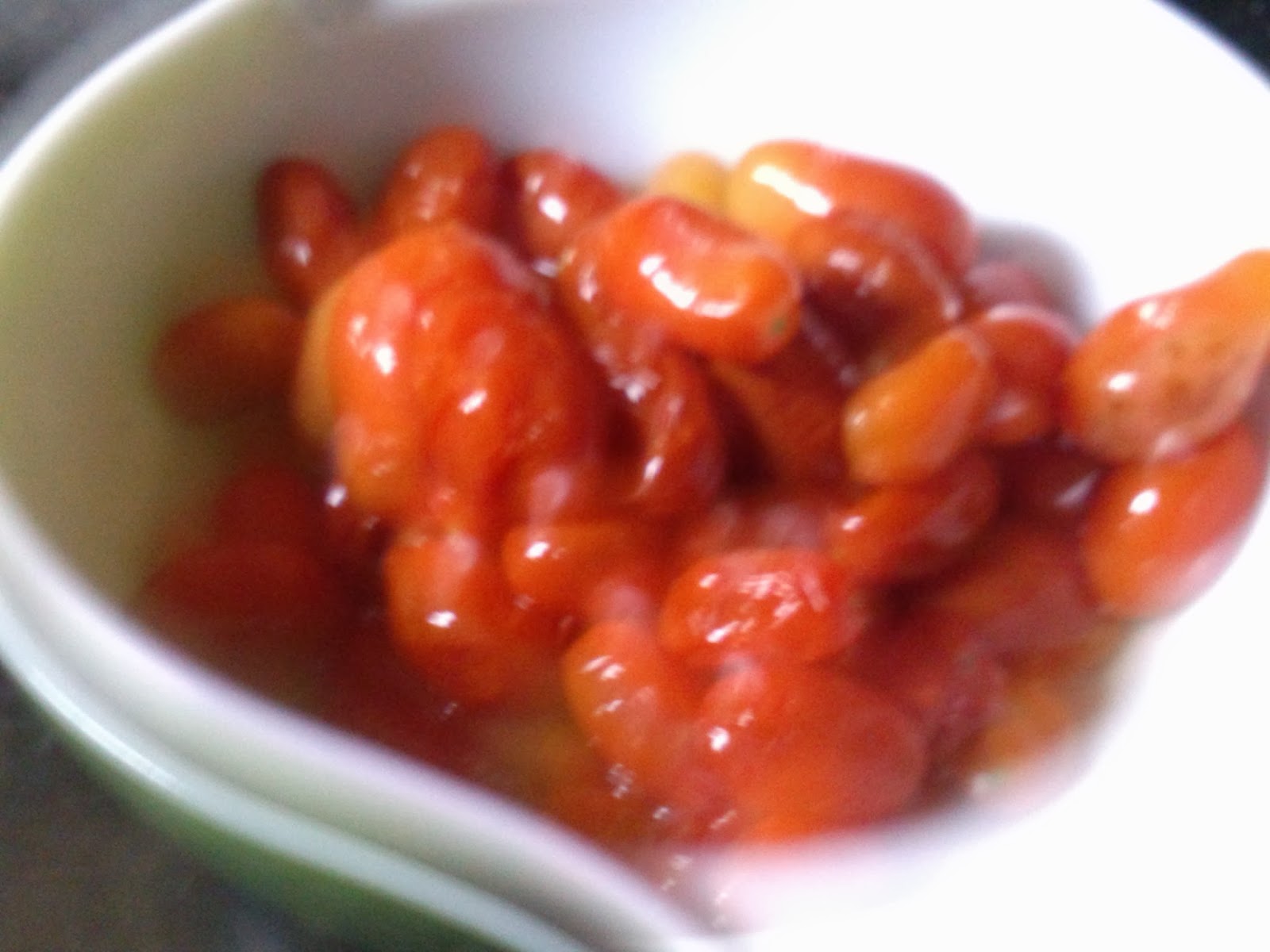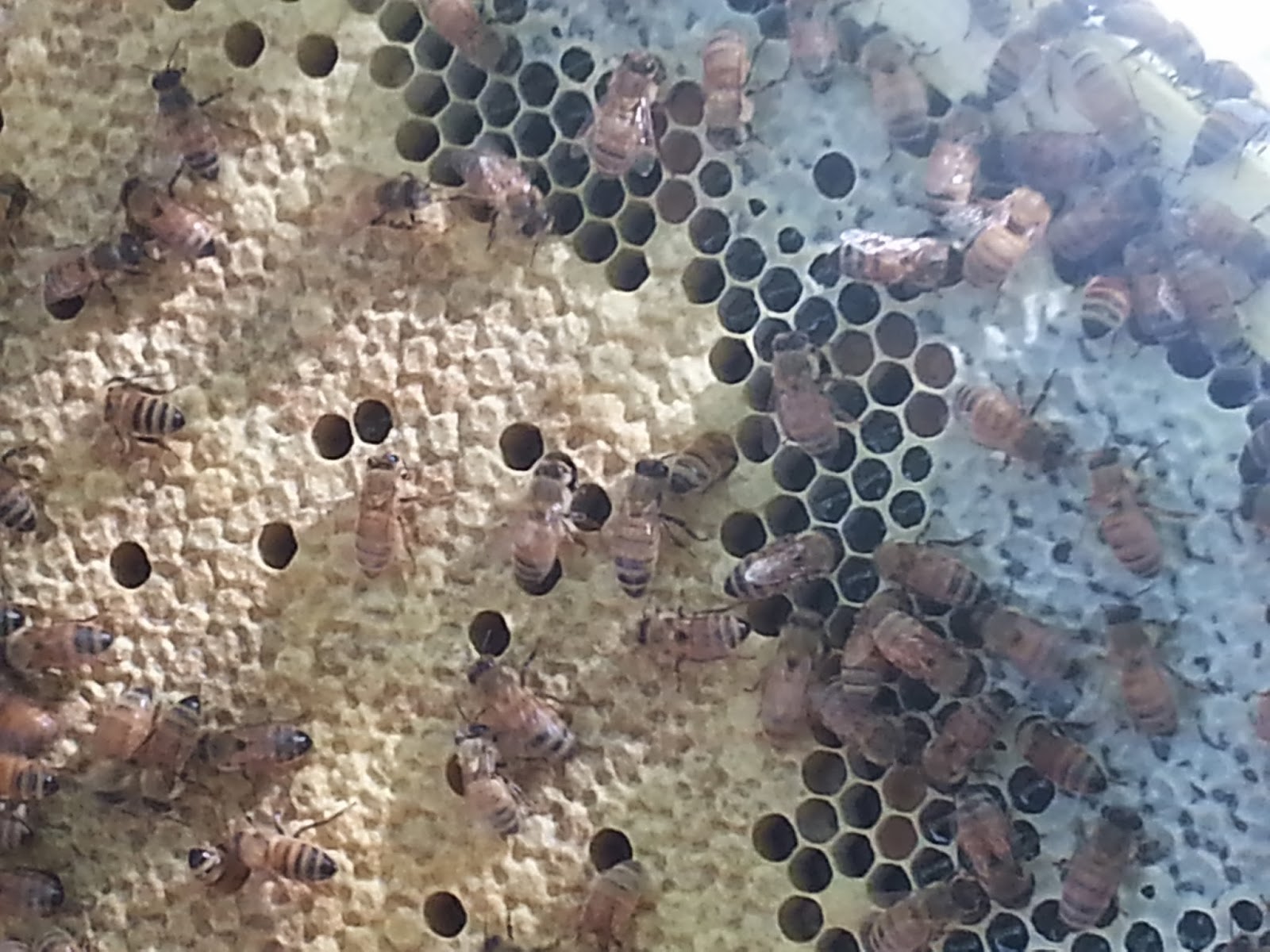Most nights I come home and Peter has made dinner. I love to cook but I tend to get home late, so I enjoyed taking the time to make a meal this week. Shakshuka is a kosher for Passover (if you care about that) dish from Israel which can be made almost entirely from our yard.
First, take an onion, 4 peppers (pick the level of heat you want).
Chop them into small pieces.
Cook them in a small amount of olive oil. Add any additional spices you may need (paprika and cumin are common, but they are not necessary)
Next, add 6-8 cloves of garlic chopped and heat.
You will then need some tomatoes (just however many it seems you need).
Put them in a bowl and squish them with your hands.
Add tomatoes and heat.
You then add eggs. When I was in Tel Aviv they would throw the eggs across the room into the pan.
I just added them.
Cook until done and enjoy! You can serve on rice, with pita, or on Matzo.
A Millenial couple redefining work-life balance. Katy and Peter Strand are lawyers in Salt Lake City, Utah. They also happen to have a garden that produces 1/4 ton of food a year, chickens for egg production, bees for honey production and a penchant for doing family projects. Come share with us as we discover a new way to handle the challenges of modern living.
Friday, February 28, 2014
Monday, February 17, 2014
Getting ready for spring part I
Its 50 degrees in Salt Lake and that means it’s time to
start preparing for spring! (I know it
doesn’t look like spring, but there is work to do before it really gets here).
For us that means our evenings and weekends are full of
preparation. It starts with Peter
feeding the bees. By giving the hive a
sugar syrup with essential oils before the flowers start the hive is able to
grow faster and is prepared to really start gathering nectar and pollen as soon
as the first lilacs and cherry blossoms fill our street. We are hoping that we will be able to gather
an early cherry blossom (and lilac and plum blossom) honey as well as our later
wild honey this year.
To make the syrup, boil 4 quarts of water,
remove from heat and add 8 lbs of sugar, when it has reached room temperature
add 2 tbs of pro health or other bee feeding supplement (these contain
essential oils and smell great). Then put this in your top feeder, removing the ventilator.
Smokers are used to calm the bees.
We then remove the jacket we put over the hive to keep it warm and dry in the winter
Up against the tree is the hive ventilation that is used in the winter
This
is also a good time to place a pollen patty in your hive and switch the
placement of the hive boxes.
Pollen patties are purchased on line
I also began our plants inside. For any of you looking to buy seeds, we
recommend using a seed exchange instead of your local store. Most seeds come from the same 3 companies,
and many are genetically modified. This
can make it impossible to save seeds from this year’s plant for next year (they
just won’t grow). Additionally, as
humans we eat and cultivate a very limited variety of each plant (3/4 of our
food comes from 8 species, while we used to eat over 80,000 species), which is
eliminating biodiversity causing other varieties to go extinct. This can be particularly problematic when the
environment, illness, or bugs begins causing problems for one type of
plant. Without nature’s variety it is
very easy for these issues to destroy whole populations, leaving little to
rebuild with (this is thought to be one of the causes of the Irish Potato
Famine). Seed exchanges allow you to
contact farmers or gardeners and use their heirloom seeds for unusual breeds of
plants. Most of the seeds planted in our
garden are for varieties of plants which are going extinct. We encourage any of you who garden to join us
in trying to increase the variety and sustainability of our garden plants.
This is the time to start your peppers and eggplants. We will be planting mostly from seeds,
although our hot peppers will be purchased as plants. I have planted indoors 2 black beauty
eggplants, 2 diamond eggplants, 4 purple beauty bell peppers, 4 orange bell
peppers and 4 king of the north red bell peppers. (Yes I know the photo is boring, but in a few
weeks it will be much more interesting, I hope).
Saturday, February 15, 2014
Eggs
Now that two of our chickens are laying we are experiencing
the difference between store bought eggs and fresh ones. The first difference is, of course where you
get them. In our first 4 eggs one was
laid outside in the snow, it froze and was unusable.
The opposite side of the spectrum when Peter went out the
next day and opened the coop Saphera was sitting inside. Instead of running away as she usually does
she squawked as if to say excuse me wait a moment. Lesson learned, you must wait for the chicken
to be out of the laying box before you attempt to gather eggs.
Our eggs are only slightly smaller than store bought large
eggs (the egg on the left is from the store).
There are more differences of course. For one, the eggs are much more sturdy. I usually crack the eggs with one hand
however these require much more force.
Also, as you can see in the photo below the egg yokes are much brighter,
and take up much more of the egg itself (though this may be because they are
small for now). They also did not mix
fully as other eggs do.
In the end I thought they might taste a bit more eggy,
however we are not sure. We will have to
have people over to do a better blind taste test and we will post the
results.
Sunday, February 2, 2014
Building the chicken coop
Working in insurance defense I have learned more about construction than I ever thought I would. Through a giant arbitration I have learned about flashing, settlement, and a bit about structural design. Even so I would never have attempted to build something for any living thing to live in, but Peter had other ideas. He found a design for a chicken coop and proceeded to make changes to it until it resembled a chicken Ramada Inn. Below are the photographs of us turning a pile of wood that barely fit into our little car into a home for our chickens (this coop could hold 20 chickens according to most chicken owners, so our girls have plenty of room, even compared to chickens producing "free range" eggs).
Original pile of wood
Building the walls
Putting on the legs
The outline of our coop
Cutting out the egg collector
Adding the floor
And the wheel
Putting on the roof
Putting tar on the roof
Putting the roof on
Putting the door on
With the doors on
See how big it is!
And its done!
The end result is a large, safe and comfortable coop, with plenty of space for our girls. Most free range chickens have significantly less space, and the door to their coop is only open for a short period. In contrast, ours have more space than they know what to do with, and are able to go eat bugs and grass all day long.
Saturday, February 1, 2014
Meet our bees
Our bees are remarkably gentle. Most bee keepers don’t get stung unless it is
fall (when the bees feel the need to defend their hives). Even in the fall our bees were not inclined
to sting (which is good because it turns out I’m allergic). The queen (the one with the red back)
determines the temperament of our hive, we are lucky in that ours is great)
They produced a reasonable amount of honey for the first
year, but next year we anticipate up to 60 lbs of honey. Bees are also helpful in making sure that the
garden produces. We rarely have flowers
that do not become fruit or vegies and our neighbor’s commented on their
improved yields (some with so many raspberries they could not eat them all).
Subscribe to:
Comments (Atom)












































